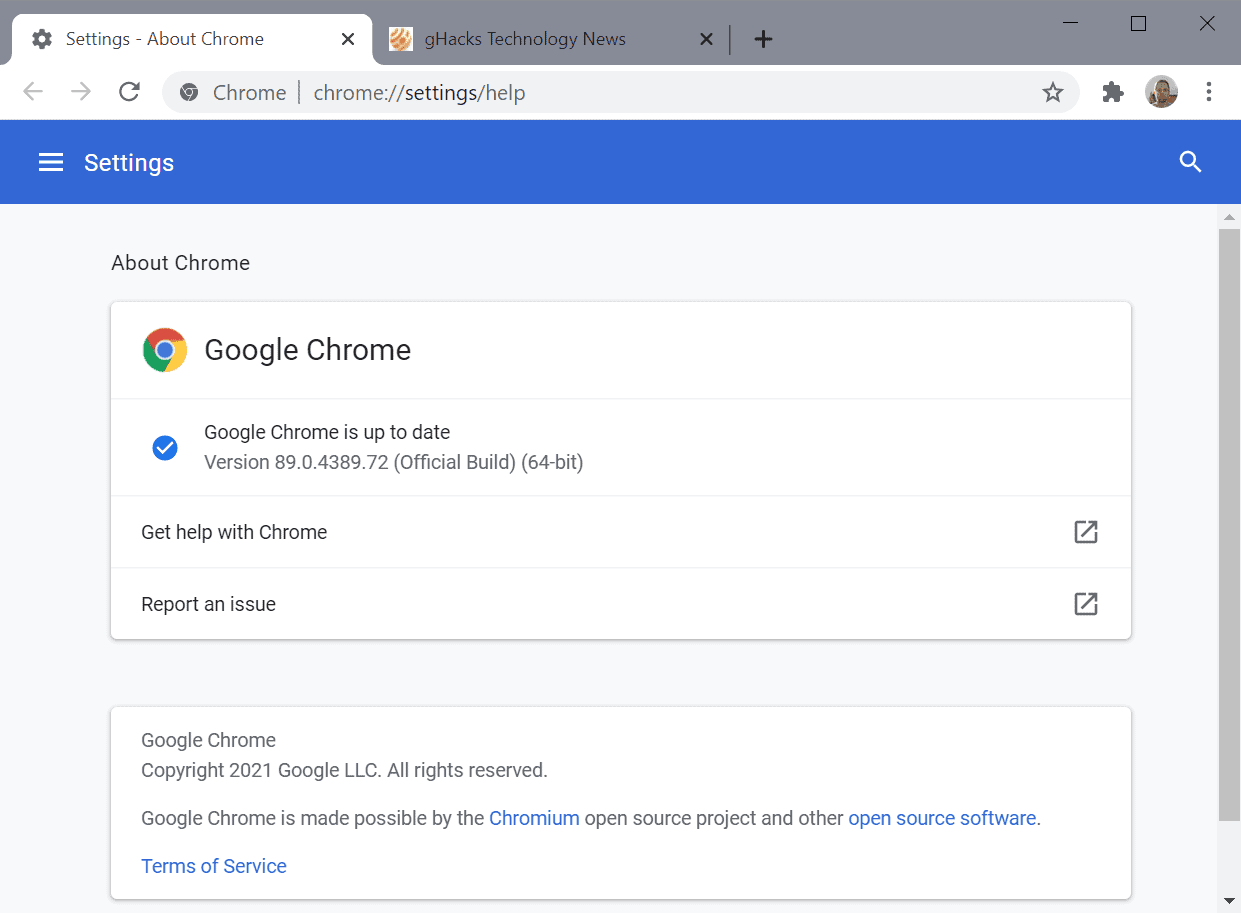Google released a new stable version of its Chrome browser on March 2, 2021. Google Chrome 89 is a security release that includes improvements and bug fixes.
The Chrome Releases blog reveals that engineers patched 47 different security issues that affected previous versions of the browser. The highest severity rating is listed as high, but Google lists only issues reported by external researchers on the page.
Chrome users can select Menu > Help > About Google Chrome to check the installed version and run a manual check for updates.

Starting with Chrome 89, devices with x86 CPUS need to support SSE3 for Chrome to run on them. The standard was introduced in the early 2000's by Intel and AMD
Chrome Status provides information on new features in Chrome 89. The new Chrome version introduces support for First-party sets, a new option to mark sites as belonging to the same party or entity. Google could for instance use the feature to link google.com and youtube.com together, ensuring that certain data can be shared across these sites.
The feature takes cues from Firefox's Enhanced Tracking Protection feature and from Microsoft Edge's Tracking Prevention feature; both of these include functionality to link sites to make sure that these work properly with the protective features enabled. Google's plan with First-party sets is to standardize the approach.
Chrome 89 introduces other privacy-related features:
- Platform-provided trust tokens -- An experiment to "ascertain the value of tokens incorporating on-device state as a mechanism for anti-spam and anti-abuse systems, and to evaluate the feature’s performance relative to standard web-issued trust tokens".
- Schemeful Same-Site - evolves same-site definition to include the URL scheme.
- User-Agent Client Hints -- designed to provide sites with information about a "user's device or conditions" without needing to use the User-Agent String.
- Anti-Fingerprinting mechanics -- the interest-based targeting API FLoC, designed to work with groups of users instead of individuals, and an event-level conversion API, to enable the correlation between ad clicks on sites and conversions on the advertisers site without identifying users individually, are available as experiments.
What else is new in Chrome 89?
- Open Tabs can be searched now. Is still being rolled out, enable chrome://flags/#enable-tab-search to get it right now.
- Chrome prefers HTTPS over HTTP when the user does not specify the protocol in the address bar.
- Chrome won't lookup single word entries anymore when entered in the address bar by default, meaning it won't assume that the word is an Intranet location. May be changed using the IntranetRedirectBehavior policy.
- Chrome on Android requires that a device is Play Protect certified, otherwise it won't run anymore; this does not affect WebView nor Chrome on virtual machines. Play Protect certified devices include Google apps and have passed Android compatibility testing.
- Version pinning is a new option to keep extensions or applications on a specified version. May be configured via the ExtensionSettings policy.
- Access to certain Google Account features even without Chrome Sync.
- New profile picker and profile options.
- BeyondCorp Enterprise customers may check URLs for phishing attacks in realtime.
- New BrowsingDataLifetime and ClearBrowsingDataOnExitList policies to clear browsing data after a specific amount of time or on exit.
- Users may turn of metrics reporting even if set to on by an administrator. The feature is controlled by MetricsReportingEnabled.
- Support for the Serial API that allows sites to perform read and write operations on serial devices.
- Chrome on iOS gets biometric authentication support in Incognito Mode tabs.
- Web Share API support to share data from the Web with an app of the user's choosing.
- WebHID support that enables web applications to interact with human interface devices that have not been supported before.
- Web NFC is supported by default.
Now You: What is your take on all of these changes?
Thank you for being a Ghacks reader. The post Here is what is new in Google Chrome 89 appeared first on gHacks Technology News.

0 Commentaires